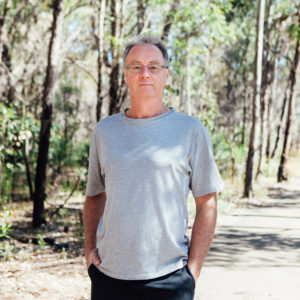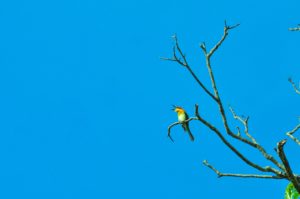As we endure natural disasters around Australia, with drought and bushfires destroying swathes of land, many people are wondering how they can help native animals caught up in the aftermath.

Professor Darryl Jones – urban ecologist.
The question of whether it is ever appropriate to feed native animals, is a controversial topic that is highly divisive among conservationists but to help people through this dilemma, Urban Ecologist and Griffith University Environmental Science Professor Darryl Jones has written a book.
Feeding the Birds at Your Table is a guide to what is nutritionally appropriate to feed native animals, and what foods to avoid.
“It’s an attempt to say, `Millions of people are feeding birds, so let’s do it properly’,” Professor Jones says.
“It’s specifically about Australia and what we can do here. It’s a spinoff book, from a much larger more serious book called The Birds at My Table, which was just an exploration of what happens when we feed birds around the world.
“I study people and nature in cities. And what became very clear to me very soon was that there was an awful lot of people out there feeding birds, putting out food for them, really caring about what they can do.
“No one’s actually trying to do anything bad, but the problem in Australia is that it’s a forbidden subject. Everybody seems to know that we shouldn’t be feeding birds and that has led to a complete absence of any useful information.”
He’s found that one of the most common foods given to native birds, is particularly harmful for their health.
“The favourite birds in Australia to feed are magpies, kookaburra’s, butcherbirds, meat-eating birds. And almost all of the meat that we provide for them is mince, ground beef,” he says.
“It’s terrible. We absolutely shouldn’t be using mince for feeding the birds.
“There’s 100 things wrong with it. It’s not nutritionally appropriate. It’s got no calcium to speak of. That will weaken their bones, it’ll bend their bones, it’ll do all sorts of terrible things. So, that’s the most important thing.
“We wouldn’t eat just mince. You wouldn’t cook just mince and eat just mince.
“So, I’m advocating, because this is the commonest type of food put out for animals in Australia, that we don’t use mince and until somebody comes up with an appropriate magpie food that they develop with magpies in mind, until then it’s best to use just dog food or cat food, pet food.”
But he says the most important thing we all can provide particularly for native birds, particularly in the current harsh conditions, is a birdbath full of water.
“The first thing I would say is in the current circumstances everybody in Australia should have a birdbath,” he says.
“Water is absolutely the crucial thing. But as soon as we start to feed birds to provide the nutrition that they should have, we can get into trouble.”
He says feeding the birds is just one small aspect of his research into how nature interacts with urban environments, and that there is lots that people can do to help native animals, beyond actually feeding them.

Photo by Elmer Cañas on Unsplash
“It fits in to my overall concept of trying to understand the relationships between humans and nature in cities,” he says.
“I’m an urban ecologist, I’m really interested in the relationships that we have with wildlife and nature in general.
“People might think, and I was taught this myself, that there’s no nature in cities. If you live in southeast Queensland, you know that’s absolutely ridiculous. We’ve got so many wildlife in our own backyards…there’s tons of stuff out there and they interact with us all the time.
“What urban ecologists like me are trying to do is, `How can we make it far better for a bigger range of species? How can we bring all sorts of animals back into the city in a sensible way?’
“People in their own backyards can totally change their grassy patch and turn it into a habitat that’s useful for animals. There’s lots of tips in the book and there’s lots of information available generally about how to make even your little backyard or your porch or your inner-city patio into a place that other animals can use.”
Hear more from Professor Jones on the latest Remarkable Tales podcast.
